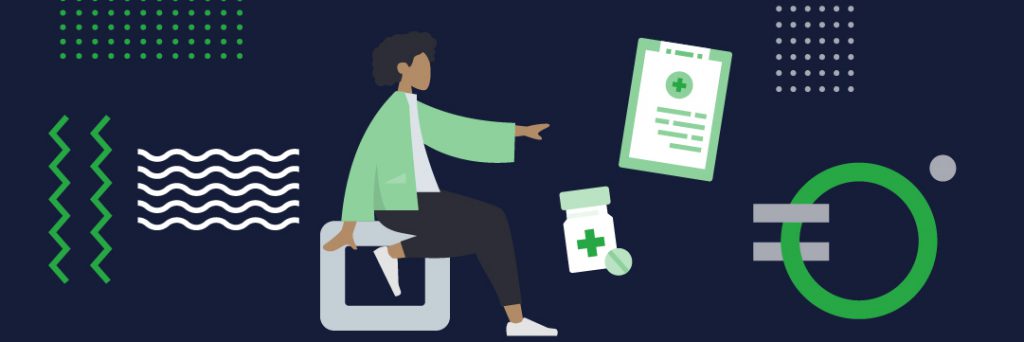Data from the US Bureau of Labor Statistics indicate that about 57,200 transcribers will be occupying the medical transcription jobs available in 2029. The need for transcribers will be anchored on advanced technology, though the numbers will be lower by 2% than 58,500 that occupied these positions in 2019. The desire to get well-paying remote jobs drives more people into transcription, especially in the medical field. Thus, there has been a steady increase in medical transcription jobs.
What is Medical Transcription?
Whenever a person mentions medical transcription, the common question is usually the difference between medical and any other transcription. Frankly speaking, there appears to be no difference between ordinary and medical transcription, considering that all involve creating transcripts out of audio files.
However, medical transcription is one of the technical areas that require experience and a basic understanding of medical terminology. The requirement for basic medical training or experience means that not everyone can be a medical transcriber.
Well, you do not have to be a nurse or a doctor to transcribe medical files. Furthermore, transcription works based on listening and writing what you hear. As such, anyone who can listen to and type is ready to take up the job.
The particular element about medical transcription is the strict technical language used. An ordinary person will type what he or she hears, yet the words are different. The result is a transcript with errors and does not accurately represent the audio files’ ideas. It results in extensive demands for revision.
Medical training is an advantage because the words on the transcript will be accurate. Since the transcriber understands the technical language used in medicine, it takes a shorter time to complete a transcription project.
Considering that you get error-free transcripts, you will enjoy a trouble-free transcription experience.
What do Medical Transcription Jobs Entail?
Medical transcribers work in hospitals or for health care providers. Like all other transcribers, their work is to convert audio and video files into written transcripts. Once you become a medical transcription editor, you will be verifying whether the details captured in transcripts are accurate.
But what exactly is expected of a medical transcriptionist?
Here is a summary of the job description:
- Listen to conversation recordings involving doctors and other health workers.
- Transcribe and interpret dictation into patient details like history, operative reports, exam notes, discharge summaries, and referral letters, among other medical documents.
- Review and edit the scripts arising from speech recognition apps to ensure that the writing is accurate, correct, consistent, and complete, based on the style stipulated by law and adapted by the health facility.
- Translate or convert medical abbreviations into a long format that is understandable to everyone accessing the medical records.
- Identify errors, inconsistencies, or missing information on records that patients use whenever they seek medical services.
- Remain in-touch with medical officers within the facilities to ensure reports emanating from the hospital are accurate and consistent.
- Submit or generate health reports to resident physicals for approval.
- Adhere to patient confidentiality protocols and guidelines so that you can safeguard the interests of the facility.
- Capture medical reports into the internal electronic health record platform.
- Carry out regular audits targeting quality improvement.
The roles above appear to go beyond the narrow description of the work of a transcriber. Because of the report, some positions will not fit a freelance medical transcriber.
Again, transcribers have expanded roles because of changing environment in the medical field. For instance, you may be required to transcribe a medical podcast for uploading onto the hospital’s website or social media platforms.
Enrolling for Medical Transcription jobs
Medical transcribers were considered office assistants for medical doctors or health facilities. After all, you only need listening and typing skills. Thus, a person with high school qualifications is fit to become a transcriptionist.
However, attempts to professionalize the field have called for advanced training. The industry is also providing certification intending to standardize qualification. As hospitals and health facilities endeavor to reinforce their staff’s capabilities, they are looking for post-high school education in the medical field.
The primary medical training is offered in community colleges, vocational schools, and under distant learning programs. A medical transcription program takes at most a year, though you may advance your studies based on specific areas you would like to pursue further. Still, this training is only meant to help you understand your role in the health services delivery chain.
Listed below are the methods to follow if you desire to apply for the medical transcription jobs.
1. Medical Transcriptionist Training
A training program for a medical transcriptionist typically involves a course in anatomy. Therefore, you will be introduced to medical terminology and legal issues that may arise from poor documentation or information handling. The course will also cover language grammar issues like punctuation, tenses, and formatting.
Training as a transcriptionist also comes with supervised work experience. If you are already familiar with the medical environment through previous training, it becomes easier to take up a transcriber job.
Ultimately, your training will focus more on handling transcription tools like software, transcripts, and editing.
2. Licensing, Registration, and Certification
The Association of Healthcare Documentation Integrity is responsible for registering and licensing medical transcriptionists.
A certificate will be issued upon completion of tests and continuing education. However, it must be noted that registration and certification are not mandatory. They only serve to raise the industry’s standards and improve the chances of getting a transcription job.
Once you achieve certification, you must continually train in transcription to maintain a valid certificate.

Qualities of a Good Medical Transcriptionist
Medical transcriptionists have higher standards to meet than any other transcriber in the market. As you may notice, a misplaced number or wrong spelling could mean that a patient is poisoned by the prescription given. As such, medical transcription requires the highest level of accuracy.
To achieve this accuracy, a medical transcriber must possess particular qualities.
Here are the main qualities a transcriber should have to stand a chance of making a fortune in the medical field.
a) Computer Skills
Transcribers in all fields use computers to download the files, load them onto transcription software, and transcribe them into text. Mastery of computer skills allows a transcriber to work faster and efficiently.
Since you can work faster, you will complete more files, gain your clients’ confidence, and obtain better reviews.
b) Attention to Detail
It has been said time without number that the medical field is susceptible to accuracy. Whether you are listening to raw audio files or editing transcripts produced by other transcribers, 100% accuracy is demanded.
Remember, any error might land your hospital or the doctor in trouble. As the transcriber, eliminate any mistake or misrepresentation in the transcripts under your care.
You’ll gain your clients’ confidence, especially hospitals and doctors that are eager to protect their reputation.
c) Critical Thinking
Critical thinking should be leaning towards the medical field. Your analysis of forms and reports should get you thinking. You should see inconsistencies and inaccuracies without being prompted by other people like supervisors or editors.
Sometimes, it might be too late to wait for a third party to spot the inconsistencies. Thus, think through reports and passages to ensure that they make sense.
d) Time Management
Each client wants a transcript delivered as soon as possible to allow other operations to continue in the hospital. It explains why transcription companies will give you a timed test because they are also working under a tight deadline. It would be best if you endeavored to deliver the transcript in the shortest time possible without compromising on quality.
The time taken to complete an audio transcription depends on the intensity of the project. Demand for more accuracy should not mean that you take more time. Work diligently to deliver the transcripts in record time. After all, you will be the primary beneficiary since you can earn more.
e) Writing Skills
Since transcription revolves around converting audio into text, it demands a good writer.
Good writers make transcripts easier to read. They know how to edit and format these transcripts so that they can communicate the intended message.
Once you get into the habit of producing user-ready transcripts, you will be the most valuable medical transcriber in the market.
How Much Do Medical Transcription Jobs Pay?
As the need for information grows, medical transcriptionists are rising the employment ladder. Previously, they were regarded as support staff in a hospital setting. Today, they are a crucial part of the corporate organization of a hospital or medical center.
Medical transcriptionists are higher in rank than your ordinary transcriptionist. It, therefore, goes without saying that they earn more.
Still, there is no set fee for medical transcribers. When employed in a healthcare setting, they earn a median salary of $33,380 per annum. The highest-paid medical transcriptionist earned $51,000 by 2019. This is a decent salary for an 8-5 job.
However, the salary scale also depended on other responsibilities assigned, and especially the office which the transcriptionist is serving. For instance, transcribers serving in medical and diagnostic laboratories earned more than those in administrative and support roles.
Medical transcriptionists are also paid based on their transcription volume. If you work in an office set up with an immense workload, you will get more chances.
In some of these cases, the transcribers work part-time or have fewer work hours than ordinary employees. It mainly happens where the workload is not sufficient to sustain an employee.
Freelance Medical Transcription Jobs
Medical transcription may appear exclusive. However, it is one of the in-demand freelance jobs on the internet. Interestingly, you have to possess the skills needed to get a job as a freelance transcriptionist, just as required when working as an employee. Consequently, some employees are turning into transcribers or extend their skills into freelance captioning during their off-hours.
A freelancer has a chance to earn more by serving more clients. It would help if you convinced the clients that you have a medical background and experience in transcription; because the skills are rare, the chances of getting a job are higher.
Once you gain a few clients’ confidence, you are guaranteed a steady flow of transcription jobs.
Final Word
Medical transcription jobs are for the few transcribers ready to pay attention to details. Certification, license, and registration will give you an upper hand because it shows you went the extra mile to prepare for the job.
With the right computer skills, grammar, and critical thinking, you will earn a fortune as a medical transcriber.
CTA
Start earning today by getting the most lucrative medical transcription jobs. At Bunny Studio, we have the best-paying clients and a guaranteed flow of gigs.
If you believe in your skills, transcription clients are waiting for you.










